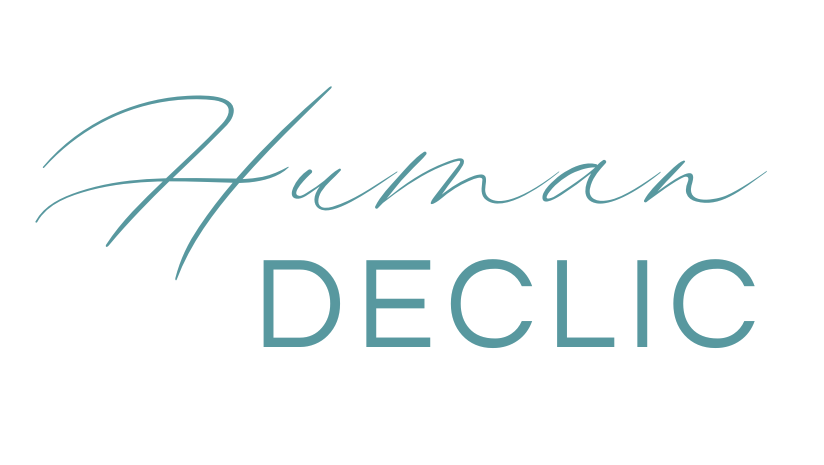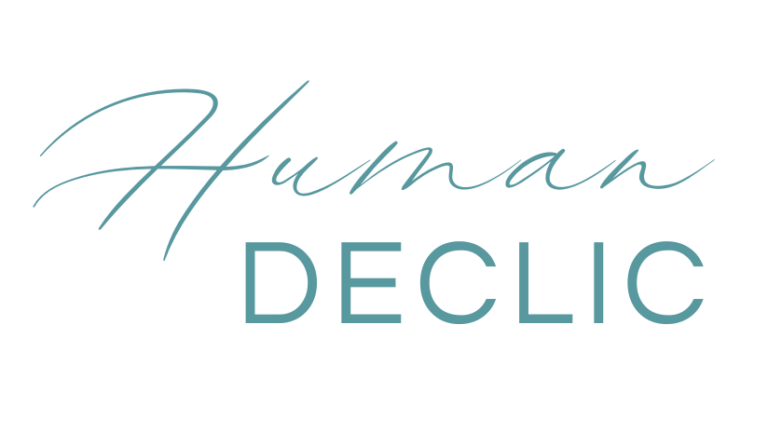The time for annual reviews is approaching, that meeting we all know which often stirs up various emotions. It’s a key moment to assess progress, exchange ideas, and prepare for the future. However, without proper preparation, these reviews could end up being nothing more than a formal routine, losing their real potential.
At Human Déclic, we are convinced that annual reviews can be much more than just a box to check on the calendar. They are a unique opportunity to boost motivation, strengthen communication, and lay the foundations for sustainable performance.
In this article, we want to offer you practical tips for transforming this often-dreaded exercise into a true lever for professional development, both for managers and employees. Let’s prepare a review that makes a difference!

The Strategic Importance of the Annual Review
The annual review occupies a central place in human resources management. Far from being just an administrative obligation, it is a strategic moment that allows you to take stock, have in-depth discussions, and prepare for the future.
Taking Stock: A Review of Past Performance
One of the main goals of the annual review is to assess the performance achieved over the past year. This review allows you to:
- Highlight the significant achievements, valuing the efforts and successes of employees.
- Identify the challenges faced and areas for improvement, in order to draw lessons for the future.
- Reconcile the employee’s perception with that of the manager regarding the results achieved.
By taking the time to analyze factual data and concrete examples, the review becomes a key step in recognizing each person’s contribution and providing constructive feedback. This look at the past serves as the foundation upon which to build future perspectives.
A Constructive Exchange Moment
Beyond the review, the annual meeting is a unique opportunity for in-depth exchange. Unlike informal meetings or weekly check-ins, this exercise offers a structured framework conducive to discussion.
For the manager, it is an opportunity to:
- Better understand the professional aspirations and expectations of employees.
- Address sometimes sensitive topics in a supportive and constructive framework.
- Strengthen the relationship of trust, which is essential for harmonious collaboration.
For the employee, it is an opportunity to:
- Express professional needs and projects, such as training, internal mobility, or a change of position.
- Suggest ideas or solutions to contribute to improving collective performance.
By fostering authentic dialogue, this exchange becomes a moment of mutual reinforcement, essential for maintaining a positive dynamic within the team.
Looking Ahead: An Opportunity to Set Clear Goals

Finally, the annual review allows you to turn your focus toward the future by defining specific and motivating goals. This projection is fundamental for giving meaning to the work and aligning personal ambitions with the company’s needs.
A good review should allow you to:
- Set SMART goals (Specific, Measurable, Achievable, Realistic, Time-bound), tailored to the company and employee context.
- Define a clear action plan, integrating the resources needed to achieve these goals (resources, training, support).
- Provide an overview of the team’s priorities and each individual’s contribution to those priorities.
By projecting in a realistic and ambitious way, the annual review becomes a source of motivation and a valuable tool for aligning everyone’s efforts with the company’s global strategy.
These three dimensions — review, exchange, and projection — make the annual review an essential strategic lever, both for collective performance and personal development. By approaching them with method and kindness, we can transform this exercise into a real asset for the company.
Preparation for Managers: Key to Success
A successful annual review largely depends on the manager’s preparation. By structuring this exchange, the manager can highlight contributions, address areas for improvement, and lay the groundwork for a constructive collaboration in the coming year. Here are the key steps for effective preparation.
Reviewing Performance Objectively
For feedback to be perceived as fair and constructive, it’s essential to rely on factual data and concrete examples. This includes:
- Analyzing the objectives set at the beginning of the year and assessing their level of achievement.
- Identifying the significant achievements, while highlighting the behaviors or skills that contributed to these successes.
- Highlighting areas for improvement, without judgment, by proposing solutions or avenues for progress.
This preparation allows for a balanced perspective on performance, valuing accomplishments while opening up development opportunities.
Adopting an Active Listening Posture
An annual review should not be a manager’s monologue but an authentic exchange moment. To create a climate of trust, it is essential to adopt active listening. This involves:
- Asking open-ended questions to encourage the employee to share their feelings, aspirations, or concerns.
- Rephrasing their responses to ensure mutual understanding.
- Showing empathy, recognizing efforts and valuing even minor progress.
This attitude fosters a constructive dialogue where the employee feels heard and understood, which strengthens motivation and commitment.
Setting SMART Goals for the Year Ahead
The goals set in the annual review must be clear, motivating, and achievable. The SMART method (Specific, Measurable, Achievable, Realistic, Time-bound) is particularly suitable for this. For example:
- Specific: Define exactly what is expected (e.g., “Improve customer satisfaction rate by 10%”).
- Measurable: Include indicators to evaluate success.
- Achievable: Ensure the goal is realistic given the available resources.
- Realistic: Align with the team’s and company’s priorities.
- Time-bound: Include a deadline to maintain momentum.
Well-defined goals allow the employee to project themselves and contribute actively to the company’s overall strategy.
Anticipating Development Requests
The annual review is also an opportunity to discuss skills development. The manager should be able to offer solutions tailored to the employee’s aspirations and needs. This can include:
- Specific training to strengthen technical or behavioral skills.
- Support through mentoring or professional coaching.
- Participation in cross-functional projects to develop new expertise.
For managers wishing to deepen their practice, Human Déclic offers in-house training focused on team cohesion and performance. Discover more here: [In-house Training: Cohesion and Performance].
By adopting these best practices, managers transform the annual review into a privileged moment to motivate their teams, strengthen trust, and ensure strategic alignment with company goals. Thorough preparation is the key to making the most of this exchange time.
Preparation for Employees: Becoming Active Participants in Your Review

The annual review is not just an opportunity for the manager to take stock; it is also a privileged moment for the employee to express themselves, highlight their achievements, and set clear expectations. Here’s how to prepare effectively for this exchange.
Assessing Your Achievements: An Objective Look at Your Year
Before the review, it’s essential to conduct a personal assessment of the past year. This will help you arrive prepared and confidently highlight your contributions.
- Identify your successes: Note the projects or tasks where you played a key role, mentioning concrete results (e.g., “I reduced delivery times by 20%”).
- Acknowledge areas for improvement: Be honest about the challenges you faced and the skills you would like to strengthen.
- Support your claims with facts: Present data, examples, or feedback from clients/teams to illustrate your performance.
This preparation demonstrates professional maturity and facilitates a constructive exchange with your manager.
Clarifying Your Expectations: Knowing What You Want
The annual review is also the time to share your professional ambitions and needs for continued growth. To do this:
- Formulate precise requests: For example, “I would like to take a project management course to take on more responsibilities.”
- Talk about your aspirations: If you are considering internal mobility or a job change, explain why and how it could benefit the company.
- Address work conditions: If adjustments could improve your productivity (telecommuting, specific tools), now is the time to bring them up.
By expressing your expectations clearly, you demonstrate that you are proactive in your development and aligned with the company’s needs.
Offering Solutions: Actively Contributing to Collective Success
Finally, adopt an attitude focused on continuous improvement by suggesting solutions to meet your team’s or the company’s challenges.
- Propose concrete ideas: For example, “To improve collaboration, I think a shared project management tool could be helpful.”
- Anticipate needs: If you identify opportunities or challenges for the upcoming year, suggest actions to address them.
- Participate in the team’s evolution: Show that you are involved in collective success by taking initiatives or sharing your observations.
This type of active contribution enhances your role and may open up new opportunities within the company.
By preparing carefully, you transform the annual review into a true opportunity for recognition and constructive negotiation. Becoming an active participant in this exchange means not only highlighting your skills but also actively contributing to the success of the team and the company.
Pitfalls to Avoid During Annual Reviews
Even with the best intentions, certain behaviors or attitudes can limit the effectiveness of the annual review. Both managers and employees must identify and avoid these pitfalls to transform the meeting into a truly constructive exchange.
For Managers: Watch Out for Classic Pitfalls
1️⃣ Lack of preparation
An unprepared review can give the impression of disorganization and frustrate the employee. To avoid this:
- Take the time to review past objectives and your employee’s achievements.
- Prepare concrete examples to illustrate your feedback.
A rushed or improvised review can harm mutual trust and motivation.
2️⃣ Subjective judgments
Feedback based on personal feelings, without concrete facts, can be poorly received. To remain objective:
- Base your feedback on measurable data and verifiable facts.
- Avoid generalizations like “you always…” or “you never…”.
3️⃣ One-sided monologue
A review where only the manager talks can quickly become ineffective and demotivating. To encourage real dialogue:
- Ask open-ended questions and let the employee speak.
- Rephrase their responses to show that you are actively listening.
By avoiding these pitfalls, you will create a supportive exchange climate, essential for motivating and retaining your employees. To go further in managing these key moments, check our article: [Building Self-Confidence: Practical Tips].
For Employees: Don’t Miss the Opportunity
1️⃣ Limiting yourself to passive listening
The annual review is your chance to express yourself and share your expectations. If you don’t speak up:
- Your successes might go unnoticed.
- Your needs or aspirations will remain unknown.
Prepare to highlight your contributions and make clear requests.
2️⃣ Avoiding constructive feedback
Out of fear of disturbing or appearing critical, some employees hesitate to provide feedback on their work environment. However, this feedback is essential for improving practices.
- Express your ideas constructively: suggest solutions rather than just identifying problems.
- Remain factual and kind in your observations.
By adopting a proactive and engaged attitude, you will transform this review into a development lever, not only for yourself but also for your team.
By avoiding these common mistakes, managers and employees will fully benefit from the opportunities offered by the annual review. Well-conducted, these exchanges strengthen trust and lay the foundation for even more effective collaboration.
Tools and Practices for a Successful Review
To transform the annual review into a constructive and motivating moment, it is essential to rely on appropriate tools and effective exchange techniques. These elements help structure the review and ensure a real long-term impact.
Preparatory Supports: Structuring the Review with the Right Tools
Effective preparation relies on using clear, detailed tools that facilitate evaluation and discussion. Key tools include:
- Evaluation sheets: They allow you to document set goals, achieved results, and areas for improvement, providing a global and organized view of performance.
- Skills grids: Ideal for analyzing technical know-how and behavioral competencies (soft skills) of employees.
- Checklists: Useful to ensure that no essential point is overlooked, whether it’s achievements, training needs, or objectives for the year ahead.
These supports help structure the review while offering a factual basis that facilitates dialogue and decision-making.
Exchange Techniques: Fostering Constructive Dialogue
For the review to be a real conversation and not a monologue, it’s important to use effective exchange techniques. Two particularly useful methods are:
1️⃣ The DESC method (Describe, Express, Specify, Conclude):
- Describe: State the facts objectively (e.g., “On project X, the initial deadline was two months.”).
- Express: Share your feelings or observations (e.g., “I think this management put the team in difficulty.”).
- Specify: Suggest an improvement (e.g., “We could plan intermediate steps.”).
- Conclude: Confirm a concrete action plan.
2️⃣ Positive/Negative Feedback:
- Start with a positive point to highlight successes.
- Provide constructive feedback on one point to improve, with a solution or suggestion.
- End with encouragement to motivate the employee to progress.
These techniques foster a balanced and supportive dialogue, which is essential to maintain motivation and trust.
Post-Review Follow-Up: Acting on Commitments
An annual review doesn’t end once the exchange is over. The real impact lies in following up on the decisions and commitments made. To do this:
- Set up a clear action plan: note the goals, necessary resources, and deadlines.
- Establish follow-up steps: plan regular check-ins to assess progress and adjust priorities if necessary.
- Communicate results: Highlight progress made throughout the year to maintain employee engagement.
Good follow-up enhances the manager’s credibility and shows that the annual review is not just a formality, but a real development tool.
With appropriate tools, proven exchange techniques, and a rigorous follow-up, the annual review can become a strategic moment for dialogue and joint development. Managers and employees thus have the keys to making this exercise a sustainable performance lever.
How Human Déclic Can Support You?
Annual review is much more than just an administrative obligation: it’s a powerful lever to develop skills, enhance communication, and align individual goals with company objectives. To maximize the impact of these key moments, we offer a range of services tailored to the needs of managers and employees.
Training Managers to Conduct Annual Reviews
The success of an annual review depends largely on the manager’s preparation and ability to create a constructive and motivating dialogue. We offer training to help managers:
- Master evaluation techniques and constructive feedback.
- Structure their exchanges with proven methodologies.
- Develop active listening skills to better understand their employees’ needs and expectations.
For more on our professional training, visit this page: [Professional Training in HR, Management, and Communication].
Supporting Employees in Their Preparation
Employees play an active role in the success of the annual review. We help them to:
- Make a clear and objective assessment of their achievements and areas for improvement.
- Identify and formulate their professional aspirations.
- Prepare to discuss sensitive or strategic topics with confidence and clarity.
This support strengthens their commitment and ability to contribute effectively to the review.
Tools and Tips for Structuring and Enhancing Reviews
We provide companies with practical and personalized tools to optimize each step of the annual review:
- Evaluation sheets and skills grids, tailored to your organization’s specifics.
- Feedback techniques and models to promote constructive exchanges.
- Clear action plans to ensure effective post-review follow-up.
By combining these resources with our training, we help you make annual reviews a true pillar of sustainable performance.
Tailored Support to Meet Your Needs
Whether you’re a small business, a startup, or a large corporation, Human Déclic offers solutions tailored to optimize your HR and management practices. Discover how we can support you with our personalized approach here: [Development and Professional Coaching for Leaders and Managers].
With Human Déclic, transform your annual reviews into a true driver of motivation and performance for your teams. Together, let’s make these key moments a strategic asset for your organization.
Transform Your Annual Reviews into Levers of Performance and Motivation
Annual reviews are much more than a mere formality: they are a strategic lever to strengthen performance, motivation, and communication within your teams. Whether it’s to assess progress, engage in constructive exchange, or look forward with clear goals, these moments can transform the professional dynamic and foster collective success.
At Human Déclic, we support you in making these reviews a true driver of development for your employees and your organization. With our training and tailored tools, we help managers and employees prepare for and experience these exchanges in an efficient and constructive way.
📞 Contact us today to optimize your HR practices and support your teams in their professional development.
👉 Book a meeting directly on our site
To learn more about the legal obligations related to annual reviews, visit this official page: Mandatory Professional Review – Service-public.fr.
Transform your annual reviews into key moments of success with Human Déclic! 🚀





